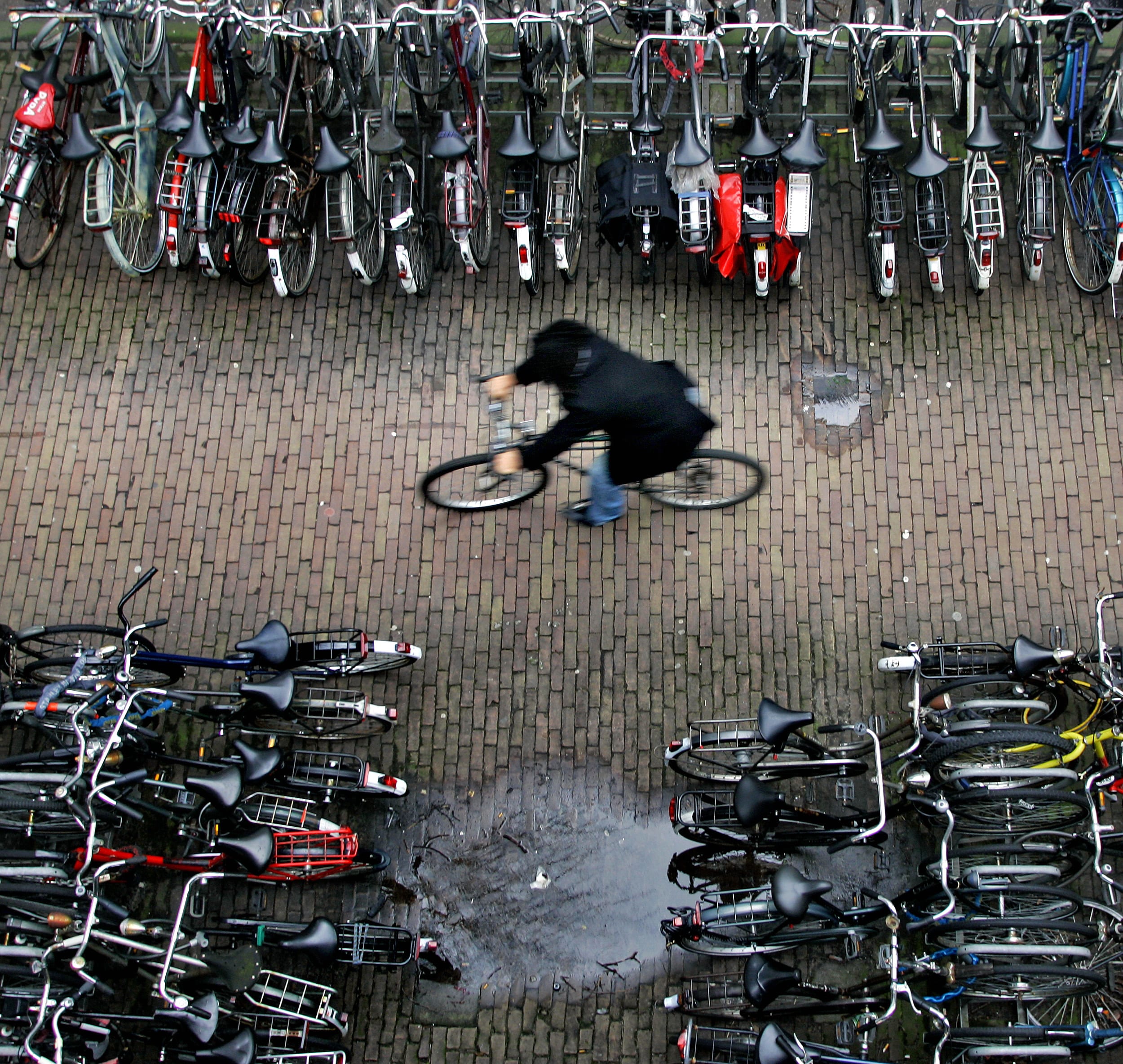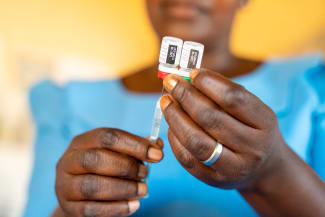Cycling improves health, reduces carbon emissions, and provides affordable transportation, yet more than 60,000 cyclists die annually in traffic crashes worldwide. The Netherlands, often regarded as the most bicycle-oriented country, offers a template for avoiding these preventable deaths and injuries.
With 35,000 kilometers (21,748 miles) of cycling paths, cyclist-first infrastructure, a climate suited for, and a culture deeply rooted in biking, more than 70% of Dutch citizens cycle at least once per week. As multiple articles have described, however, the Netherlands has only within the last 50 years created its bicycle-inclusive environment. Following the popularization of bicycles in response to the 1973 oil crisis, and the subsequent uptick in traffic fatalities and injuries among cyclists, the government prioritized bicycle-centric urban planning in the 1970s.
One widely referenced metric for success is the "15-minute city" to assess the accessibility of daily services within a 15-minute walk or bike ride. Efforts such as these not only boost cycling but also create ripple effects that strengthen local economies, improve urban livability, and enhance environmental sustainability. Utrecht, the Netherlands—one of the highest-scoring cities in terms of quality of life—already exemplifies this ideal and has created a plan to become a "10-minute city" by 2040, even as its population continues to grow.
Utrecht has long prioritized bicycles over cars and is working to create hubs that maximize green space and waterways while providing residents with grocery stores, schools, and health-care services. A woman who moved with her family to Utrecht from Atlanta noted that her family's car-free life in Utrecht is "not just possible, but preferable."
Carbon emissions could be reduced by more than 400 million metric tons annually if everyone globally adopted the cycling habits of Danish people
Elsewhere in Europe, Paris is proving that formerly crowded, car-dependent cities can embrace cycling using the 15-minute city model. Since 2015, the city has sought to become "100% bikeable" and is already seeing the benefits. Between October 2022 and October 2023, bicycle usage doubled as Paris builds new cycling paths, parking stands and spaces, and bicycle-sharing programs. A larger percentage of trips from the inner suburbs to the city are now made by bicycle rather than car. A recent report [PDF] shows that harmful pollutant levels were reduced by half between 2005 and 2024, a drop attributable to Mayor Anne Hidalgo's push to make Paris car free.
The benefits of improving bicycle infrastructure extend far beyond cyclists' safety to improving planetary and human health. Regular cycling contributes positively to individuals' physical and mental health and is a climate-positive and economically viable choice for transportation. World Bicycle Day (June 3) provides an opportunity to examine and advocate for policies and practices that can improve health worldwide.
Positive Externalities of Cycling
The benefits of active transportation on pollution and climate health are tremendous. As seen in Paris, the switch to bicycles and active transportation from cars drastically reduces carbon emissions. A 2022 study suggested that annual carbon emissions could be reduced by more than 400 million metric tons annually if everyone globally adopted the cycling habits of Danish people.
Although this is ambitious, even biking just one day per week can have noticeable impacts; taking one bike trip per day, every day for a single year, reduces emissions equivalent to a flight from London to New York. Fewer cars on the roads also alleviates congestion, further reducing carbon emissions. Urban planning that prioritizes the livability of cities, the preservation of green spaces, and the promotion of active lifestyles further supports climate health and sustainability.
Cycling has lasting physical and mental health benefits for individuals. Physical activity, including cycling, is proven to boost mood, energy, and cognitive function, while warding off chronic disease. In 2024, a study from France found that cycling prevented nearly 2,000 premature deaths and nearly 6,000 cases of chronic disease. If 25% of car trips were bicycle trips, commuters could prevent an additional 1,800 deaths from five leading chronic diseases. During the COVID-19 pandemic, Amy Thai, an environmental scientist and writer in British Columbia, Canada, noticed that without her daily bike commute, her mood took a turn for the worse—cycling 21 kilometers (13 miles) to work in the Vancouver area, no matter the conditions, refreshed her mind and body and gave her "the resilience to feel like everything will be ok."
Safety Through Infrastructure
Protecting cyclists' safety through infrastructure is essential, but helmet-wearing is one of the single most important actions individuals can take to keep themselves safe in case of a crash. Even in the Netherlands, where bicycle lanes are central in urban planning, serious injuries and deaths among cyclists are now rising. Contributing factors include an uptick in the usage of e-bikes, which can travel at higher speeds, as well as a Dutch aversion to helmets.
Public health officials and neurologists in the Netherlands are encouraging citizens to reconsider helmet use, citing staggering statistics about the number of serious injuries to cyclists that involve head injuries including concussion, skull fracture, or traumatic brain injury. Although helmets cannot prevent collisions, they can prevent serious injury and death by protecting the head and brain. Recent reports have noted increased deaths among older Dutch cyclists.
In 2022, more than half of all cyclist deaths in the Netherlands occurred in people age 75 years and older. Given that more than 50% of global cyclist deaths occur after age 50, and 40% between the ages of 50 and 69, it is imperative to consider interventions and safety measures for people of all ages, especially those more vulnerable, including children and older adults. As e-bikes become increasingly popular, new strategies will be needed to promote safety and reduce the risk of injury among riders, pedestrians, and other road users globally.
Although cities such as Paris and countries such as the Netherlands are leading the charge to promote cycling-positive infrastructure and culture, much progress remains to be made. Barriers to uptake among citizens often include anticycling infrastructure and weather. Rain, cold, and snow are not conducive to biking, nor are heat and humidity. The lack of designated bike parking or secure storage in buildings, the absence of long-range public transportation, and minimal protected paths or bike lanes deter ridership. In Malaysia, where bike lanes are rare and are often used by motorcycles, defeating their purpose and making them less safe for cyclists, this challenge is common. Addressing these problems is essential to increasing global bicycle ridership.
China's experience with bike-sharing programs highlights the importance of sustainable planning in cycling initiatives. Once a haven for bicycles, many Chinese cities have become car-dependent over the last few decades following a shift toward public transportation and the promotion of the auto industry.
Ten years ago, in an attempt to reverse this trend and meet increasing demand, bike-sharing programs sprang up everywhere, but with already crowded streets and a lack of adequate infrastructure to support a sudden return to cycling (including protected lanes, parking, and repair services), these programs quickly oversaturated the market and became obsolete, leaving bicycle graveyards behind. Today, cities such as Yichang are trying to sustainably revitalize the bicycle, with the construction of wide bicycle lanes, greenways, "pocket parks," and even BMX tracks.
World Bicycle Day stands as a reminder of cycling's undeniable benefits—for individual well-being, planetary health, and economic resilience—and of the need for thoughtful, collaborative approaches to expanding cycling-friendly policies worldwide.

AUTHOR'S NOTE: All statements and views expressed in this article are solely those of the individual authors and are not necessarily shared by their institution.












